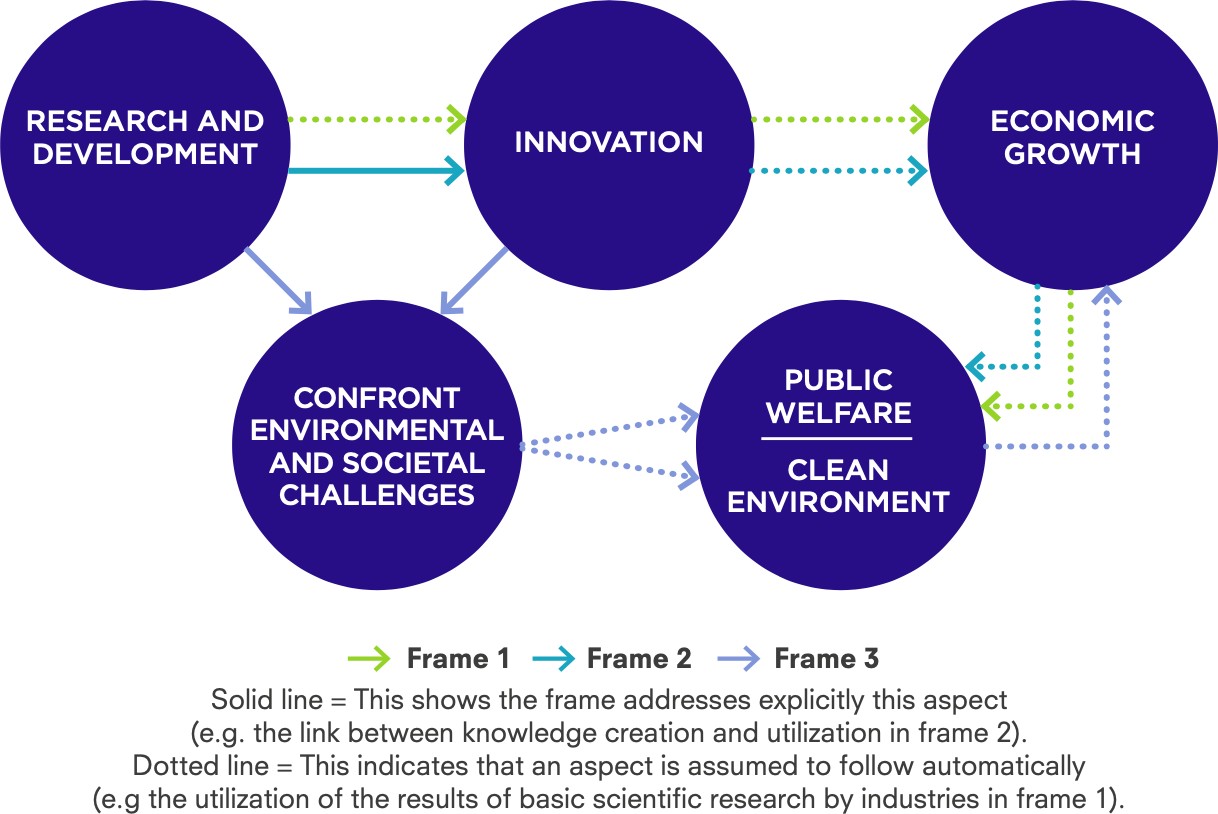The digitalization offers a lot of advantages, not only as a key enabler to increase economic growth, but also to tackle societal and ecological challenges, aligned with the United Nation (UN) Sustainable Development Goals (SDGs). Digitalization and smartization can speed up the progress toward all of the 17 goals. The emergence of technological advancement through digital data processing and analysis can contribute to all of the SDGs, for instance, the emergence of data-driven agriculture that could optimize the yield crop while increasing energy efficiency, which aligned with the SDG 2 (Zero Hunger). Digitalization is also closely related to SDG 9 (Industry, Innovation, and Infrastructure) as a part of emerging innovation that can potentially encourage economic growth.
Challenge
In today’s era of digitalization, science and technology are crucial for system transformation as they provide a repertoire of possibilities. Since the Industrial Revolution in the 1700s, new technologies have been developed with immense power especially for economic growth. Not solely a key enabler to increase economic growth, digitalization is also widely known to tackle societal and ecological challenges. Several examples of how digitalisation helps solve these issues include the creation of telemedicine to expand the reach of public health and drone technology to monitor soil and yield crops.
Digital technologies are one of the key enablers in achieving 17 goals of the United Nation (UN) Sustainable Development Goals (SDGs)—first introduced in 2015. They have been promoted as the one of the most hopeful tools to tackle those challenges. The emergence of technological advancement through digital data processing and analysis can contribute to all the SDGs, for instance, data-driven agriculture that optimizes the yield crop while increasing the energy efficiency, which is in line with the SDG 2 (Zero Hunger). Digitalisation is also tightly related to SDG 9: Industry, Innovation, and Infrastructure since it is a part of emerging innovation and could encourage economic growth.
Technology has revolutionized the world by providing great benefit to living in a tech-filled world. However, these advantages come with an environmental tradeoff. Electronic waste (e-waste), mainly discarded electronic devices that are no longer wanted or functional, has become the world’s fastest-growing waste stream. By 2030, global electronic waste will increase by 21 percent.
The challenge becomes clear: how to address the social and environmental impacts of digitalization while promoting economic growth? Digitalization and smartization is widely beneficial, yet there is a need to optimize technological advancement to tackle these challenges without creating new problems for the future.
Proposal
Transformative innovation policy (TIP) proposes fundamental alterations on the existing socio- technical systems to overcome obstacles (Molas-Gallart et al., 2021). To understand the need for TIP, we should first acknowledge the need for a clear way to design, implement, and manage challenge-driven innovation policies to address various issues such as climate change, food security, inequality, and energy. To this end, optimizing science and technology-based solutions alone is not enough; we should instead transform STI policy into a socio-technical system (Schot et al., 2017).
Three frames in the area of STI (Schot et al., 2017) are R&D, the national system of innovation, and transformative innovation policy. R&D, which emerged in the 1950s, proposes a concept of innovation led by investment in research and development. The objective is to push economic growth which can later lead to fulfilling societal needs. The second frame, the national system of innovation, focuses on the implementation of knowledge, monetization, connection, and relations among innovation actors in the system. The elements include the cognitive capacity, businesses’ potential, and entrepreneurship. One similarity between the first and the second frames is that the impacts of innovation for the social and environmental aspects are not necessarily the central part of the system. To this end, TIP is able to fill that gap and address the social and environmental challenges as integrated in the Sustainable Development Goals (SGDs). This frame is yet to be finalized and requiring further validation and improvement (Schot et al., 2017).

Have A Clear Direction
Directionality is key in policy making, especially to achieve societal goals according to UN SDGs through the digitalization and smartization pathway as part of the science, technology, and innovation area of interest. All relevant actors should be engaged to discuss any possible scenarios and pathways, as well as their entailing risks and concequences.
Directionality means prioritizing social impacts over other alternative pathways, which includes developing a process of defining collective concerns (European Environment Agency., 2019). It is also necessary toaddress the question around ideal future conditions, ultimate goals, and their reasoning. For instance, the public may opt to allocate the public spending to fund environmentally sustainable innovation rather than to subsidize innovative firms.
Focus on Societal Goal
This framework can be applied in all policy problems, but particularly the grand societal goals or challenges. Since this framework is based on the third frame of innovation policy, environmental and social challenges are an integral part of science, technology, and innovation policy, which can lead to public welfare and clean environment, and further achieve economic growth (Schot et al., n.d.)
The societal goals or grand challenges for this policy framework include the Sustainable Development Goals (SDGs) and the planetary boundaries. For instance, in achieving societal goals according to SDGs number 6, the societal goals can be providing affordable clean water and sanitation in an environmentally and socially sustainable way.
The societal goals or grand challenges should be specific and cover multiple aspects of the policy. It also can be aligned with one or more goals from different SDGs. For instance, in order to solve plastic waste in Indonesia, it could be relevant with SDG 12 on responsible consumption and production and Planetary Boundaries about chemical pollutants.
Address Impact at System Level
Another important aspect about formulating a policy around science, technology, and innovation through digitalization and smartization is how it could solve environmental and social challenges, create impacts to all actors, and build a cross-sectoral collaboration. In other words, the policy should be effective at the socio-technical level, both for the existing socio-technical system or future one, as planned in the direction of the policy.
Addressing impacts at the system level should start by asking how the existing system works. In the case of plastic waste, comprehensive understanding is required on how plastic is used across industries and markets, what social practices are influencing its consumption or production, and all the ways we can do differently.
Another way to ensure wider impacts is by integrating the policy with other policies. For instance, for handling plastic waste, bigger impacts can be achieved if the policy is integrated with industrial policy as well as health policy.
Embrace Learning and Reflexivity
For a policy to be a transformative innovation, it should be reflexive. Reflexivity can be interpreted as the capability of rethinking, unlearning, and relearning continuously in practice. The reflexivity process is not limited to the solutions and how it is derived, but also how problems are addressed in every certain period of time.
This process should be started by asking what is currently happening, including the process, coordination, and relationship between entities, while also criticizing the outcomes and impacts. Reflexivity also means evaluating routine processes that regularly happen and historical aspects of a practice. The key for learning and reflexivity is simply questioning everything and keeping a critical mind.
Encourage Conflict and Consensus
Another criteria for a policy to be transformative is that it requires participation from various actors. The actors involved are not only those who directly contribute to the cause or are most affected, but also indirect actors.
Good and democratic participation means encouraging opposing views. This is to avoid echo chambers and welcome various perspectives, which is essential in good policy making. Furthermore, open discussions can also support change at the system level. In the case of plastic waste, it is important to consider loss of livelihoods in the plastic industry or plastic scavengers commonly found in developing countries.
Be Inclusive
Policy discussion should not be limited only to experts but instead inclusive to all relevant actors including civil society, indigenous communities, and marginalized communities (Schot et al., n.d.). Policy making should be transparent, evidence-driven, accessible, and responsive to a wide range of citizens including and especially the indigenous people. To ensure successful policy making, inclusivity should be taken into account at all stages of the design and delivery of public policies and services. Inclusive policy making not only enhances transparency, accountability, and public participation, it also and builds civic capacity and offers a way for the government to improve their policy performance by collaborating with citizens, civil society organizations (CSOs), the private sector, and other stakeholders to deliver concrete improvement in policy outcomes and the quality of public services (OECD, 2013)
Conclusion
Digitalization and smartization is a subset of science, technology, and innovation (STI), which requires a new transformative approach for policy making to make it more effective. A transformative innovation policy approach is introduced in this policy brief in order to tackle policy issues around STI area. There are 6 (six) criteria required in order to create a transformative innovation policy: directionality, societal goals, system-level impact, learning and reflexivity, conflict and consensus, and inclusivity.
References
Akon-Yamga, G., Daniels, C. U., Quaye, W., Ting, B. M., & Asante, A. A. (2021). Transformative innovation policy approach to e-waste management in Ghana: Perspectives of actors on transformative changes. Science and Public Policy, 48(3), 387–397. https://doi.org/10.1093/scipol/scab005
Ghosh, B., Kivimaa, P., Ramirez, M., Schot, J., & Torrens, J. (2021). Transformative Outcomes: Assessing and reorienting experimentation with transformative innovation policy. 38.
Kably, N., Casasbuenas, J., Engasser, F., & Schlimm, A. (2019, September 13). Indonesia’s innovation system at a glance. Nesta. https://www.nesta.org.uk/report/understanding- innovation-policymakers-indonesia/indonesias-innovation-system-at-a-glance/
European Environment Agency. (2019). Sustainability transitions: Policy and practice.
Publications Office. https://data.europa.eu/doi/10.2800/641030
Molas-Gallart, J., Boni, A., Giachi, S., & Schot, J. (2021). A formative approach to the evaluation of Transformative Innovation Policies. Research Evaluation, rvab016. https://doi.org/10.1093/reseval/rvab016
OECD. (2013). Government at a Glance 2013. OECD. https://doi.org/10.1787/gov_glance-2013- en
Schot, J., Boni, A., Ramirez, M., & Alvial-Palavicino, C. (n.d.). Transformative Innovation Policy and Social Innovation. GLOBAL TRENDS, 5.
Schot, J., Daniels, C., Torrens, J., & Bloomfield, G. (2017). Developing a Shared Understanding of Transformative Innovation Policy. TIPC Research Brief, 22.In Scott Baum and Arum Mahiznan, eds. E-Governance and Social Inclusion: Concepts and Cases. Hershey, PA: IGI Global, pp. 10-24.
Kate Boeding, Jonah Czerwinski, and Richard McConkie (2018). 3 POTENTIAL BENEFITS OF BLOCKCHAIN FOR GOVERNMENT from https://www.boozallen.com/s/insight/blog/3- potential-benefits-of-government-blockchain.html
Obi Toshio and Naoko Iwasaki, ed. (2015). A Decade of World E-Government Rankings.
Amsterdam: IOS Press.
Obi Toshio (2014) , “Survey on the e-local government for middle-class executives in 131
districts in Japan” in July, in Tachikawa, Tokyo.
UNEP (2018). The weight of the Cities: Resouce Requirements of Future Urbanizations. United Nations Environment Program, Nairobi
About the Authors
First Author and Affiliation
Chandra Singgih Pitoyo, Science Policy Research Unit, University of Sussex, UK
Chandra Singgih Pitoyo is a graduate student in University of Sussex, United Kingdom. Previously, Chandra worked in the mining industry and as product manager in the fast-paced startup industry. He is currently pursuing his master’s degree at Science Policy Research Unit, University of Sussex, UK.
Second Author and Affiliation Belania Yunitasari, Central Bank of Indonesia, Indonesia
 Belania Yunitasari is a Junior Analyst in the Central Bank of Indonesia. Prior to joining the Central Bank of Indonesia in 2019, Belania served at Bank Indonesia Representative in Bangka Belitung Province.
Belania Yunitasari is a Junior Analyst in the Central Bank of Indonesia. Prior to joining the Central Bank of Indonesia in 2019, Belania served at Bank Indonesia Representative in Bangka Belitung Province.









